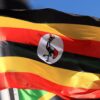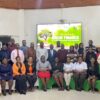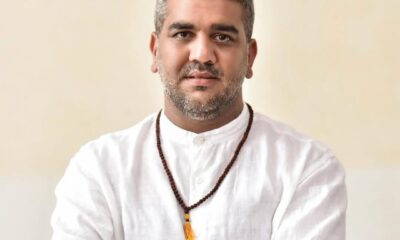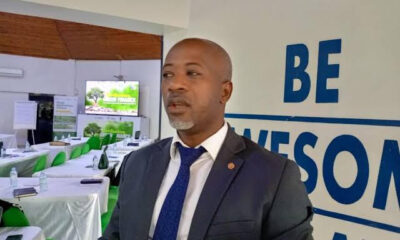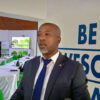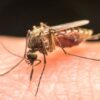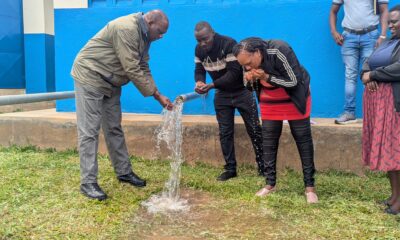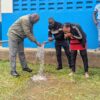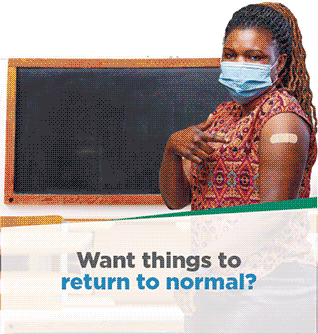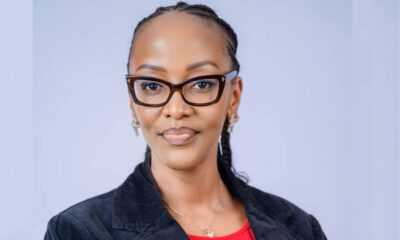Health
CSOs Demand Increased Domestic Funding for Community Health Lifeline
At a pivotal moment for Uganda’s healthcare future, concerns are mounting within the civil society sector regarding the sustainability of community-led health initiatives.
As the nation progresses with its health sector integration agenda, a critical dialogue unfolded on Tuesday, May 6th, at the National Health Financing Dialogue 2025 at Spake Resort Munyonyo. Under the banner of “The Integration Agenda: What’s the Remaining Space for the Continuity of CSO Communities in Domestic Funding for Health?”,
CSOs convened to champion the cause of increased national financial support for the grassroots health systems that serve the most vulnerable. The central question that resonated throughout the event was how to safeguard the invaluable contributions of community-based healthcare in the pursuit of Universal Health Coverage (UHC) and Sustainable Development Goal 3 (SDG 3), especially in an era of evolving funding priorities.
The Ugandan government has officially recognized the vital role that community health strategies play in achieving its UHC goals, a commitment enshrined in the National Community Health Strategy (NCHS) 2021/22 – 2025/26.
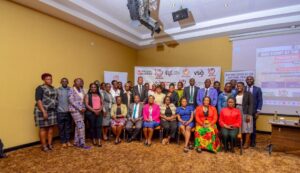
However, the current drive towards health sector integration has sparked apprehension among CSOs. Their primary worry lies in the potential erosion of crucial community-led safe havens, such as drop-in centers. These locally driven initiatives are often the sole providers of essential and specifically tailored healthcare services for marginalised populations, whose unique needs may not be adequately met by more conventional healthcare delivery models.
Adding urgency to this discourse is the concerning reality of limited domestic funding within Uganda’s health system. This challenge is further exacerbated by the gradual departure of several key international donors who have historically provided significant financial support. In this evolving context, Ugandan CSOs are making a compelling and unified call for a substantial increase in locally sourced funding to ensure the continued operation and effectiveness of the community health systems that form a vital layer of the nation’s healthcare infrastructure.
The Power of Community-Led Solutions
“Communities have the evidence, numbers, and ideas,” asserted Kyomya Macklean, Executive Director of Alliance of Women Advocating for Change (AWAC Uganda) while speaking during the event. “All we need is a safe space to co-create innovations and solutions with institutions, CSOs, and government.”
Macklean highlighted the success of the drop-in center model, a testament to cross-regional learning and effective scaling with the Ministry of Health’s support. She also pointed to the Community Health and Livelihood Enhancement Groups (CHILEG) established in 2017 as a prime example of community-led initiatives bolstering adherence to crucial services like ARVs and PrEP.
Ms. Grace Namataka from Akina Mama Wa Afrika also emphasized the critical role of CSO engagement in regional and continental financing advocacy. Highlighting the work of networks like the Tax Justice Network and initiatives in Kenya and Nigeria that monitor public budgets under the African Union agenda, she also called on Ugandan CSOs to emulate these models and actively participate in budget dialogues and regional organizing platforms to promote transparency and inclusivity in resource allocation.
The COVID-19, Ebola, and Mpox outbreaks further underscored the vital role of community structures in early prevention and detection, as highlighted Ms. Kyomukama Flavia, Executive Director of NAFOPHANU, who stressed the urgent need for greater investment in community systems.
She also emphasized the critical role of community structures in disease prevention and detection. “Communities have been complementary to government efforts, and we wish to see this partnership strengthened,” she emphasized.
Mr. Richard Lusimbo, Director General of Uganda Key Population Consortium (UKPC), stressed the necessity of formally recognizing community structures within national policies and plans.

“The biggest challenges for highly effective populations has been that most of the funding has been external, which, in a way, has limited in terms of country buying, but also really machinery integrating the programming. And I think what was very clear was the moment there were funding phrases from the US government, we saw that the programs that were speaking to the issues of key populations, highly affected populations, came to a standstill, and I think that’s something that we need to change,” he said adding “We need to see the government investing domestically into all populations, or into those speak to all the communities in the country.”
He also added that the government needs to formally recognize community structures in national policies and plans. This includes adopting and funding community-led monitoring and service models. “Co-financing models are also essential, as we can no longer rely on a single donor,” he cautioned, reflecting the shifting landscape of international aid.
The Head of Programs for Integrated Sexual and Reproductive Well-being and Entitlements at the United Nations Population Fund in Uganda, Juliana Lunguzi, stressed the urgency of focusing on internal fund generation. “The matter of monetary support for health has persisted, and I feel this is the most opportune moment for dialogue,” she conveyed.
Lunguzi underscored the significance of allocating funds towards foundational healthcare and local health networks. “We have witnessed the fragility of disease-specific initiatives, like those for HIV and malaria, which have led to critical situations in resourcing and service provision,” she noted. “Simultaneously, basic healthcare, which is fundamental for community wellness, continues to receive insufficient financial backing.”

Ms. Martha Clara, Community Health, Rights and Gender Technical Advisor, lauded the integration framework’s prioritisation of “people-centered, equitable, and cost-effective approaches.” She highlighted the remarkable success of community-led interventions during recent health crises, citing support groups and models like Young Adolescent Persons (YAPS) as examples of how communities can drive service accessibility, demand generation, and information sharing.
Walimbwa Aliyi from the Ministry of Health acknowledged the critical role of financing in the health system, describing it as “a critical building block.” He highlighted the challenges posed by high out-of-pocket expenditure, which currently constitutes a staggering 28% of total health expenditure in Uganda, placing an unsustainable burden on citizens. Aliyi emphasised the Ministry’s commitment to integrating programs and services for greater efficiency and exploring innovative financing avenues. He also noted the Ministry’s strategic shift towards prevention-focused interventions.
Peter Wambi, Senior Planner at the Ministry of Health, echoed the need for increased domestic budget allocation for health and the adoption of innovative financing strategies, referencing existing community-based social protection initiatives like cooperative health schemes within the Buganda Kingdom. “We need CSOs to unify their advocacy efforts to push for sustainable domestic health financing and to continue strengthening the CSO movement as a whole,” he urged.
Meanwhile, as the integration agenda moves forward, ensuring dedicated domestic resources for these vital community-led initiatives will be paramount in building a resilient and equitable healthcare system for all Ugandans.
Comments




